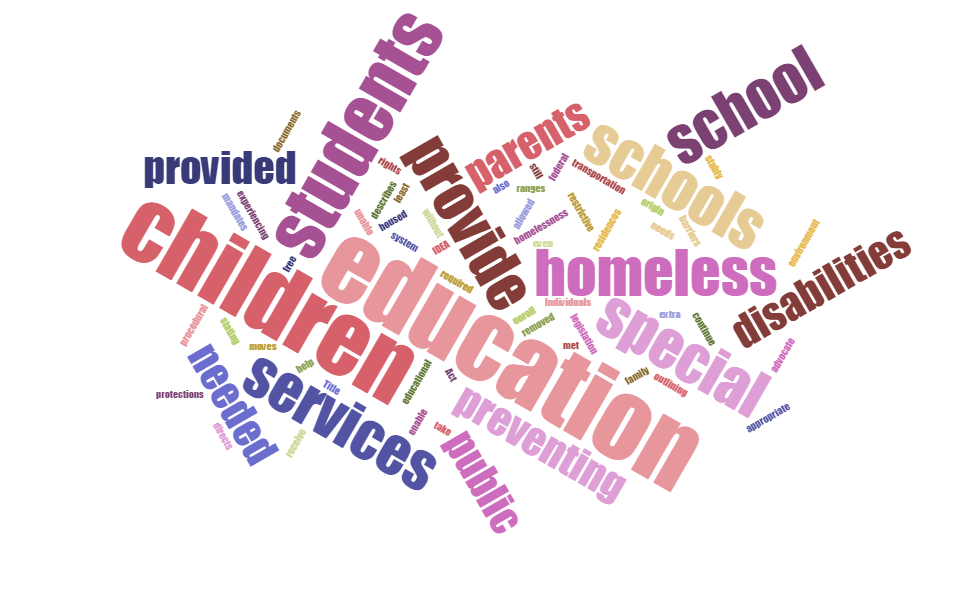Images are an important part of any digital advocate’s toolkit. The right image can draw people into your content, and also help them visualize and remember information. And on social media, your audience is more likely to share images than other types of posts. Today on the Spark Change Podcast, we talk about strategies for using different types of images, and free online tools for creating them.
Infographic
Innovating Toward Academic Success: Empowering Students Who Are Homeless or Living With Toxic Stress
In this final post in our series on homelessness in the public education system, Perry Firth profiles promising programs that are addressing the needs of children living with poverty and toxic stress. Read about First Place Scholars, The McCarver Elementary School Special Housing Program, and trauma-informed schools in Washington state.
McKinney-Vento, IDEA and You: Strategies for Helping Homeless Children With Disabilities
Part Six in our series on homelessness and poverty in the public education system provides an overview of the policies that impact the day-to-day lives of children who are homeless and who also have disabilities. It includes some strategies that school professionals can use to serve their learners who are homeless with disabilities.
A Web of Risk: Homelessness and the Special Education Category “Emotional Disturbance”
Students who receive services under the special education category Emotional Disturbance have particularly poor outcomes, both in educational attainment and other indicators of life success. The children who have been diagnosed under this category provide an example of how poverty, other demographic variables, and educational practices all interact to influence not only school success, but special education placement.
More Barriers to Learning: Homelessness and the Special Education System
Children who are homeless face numerous barriers to accessing the special education system, even as they’ve been found to need services at two to three times the rate of children who are housed. In this fourth part of our series on homelessness in the classroom, Perry Firth examines why children who are homeless and have disabilities sometimes don't receive the special education services for which they are eligible.



